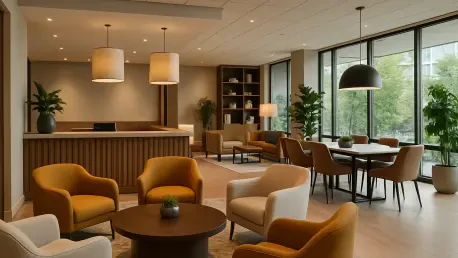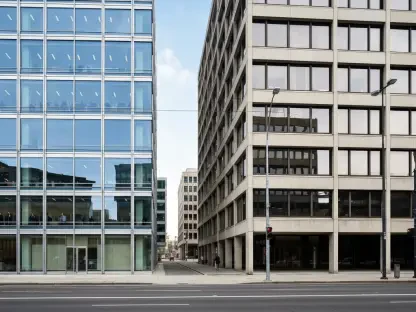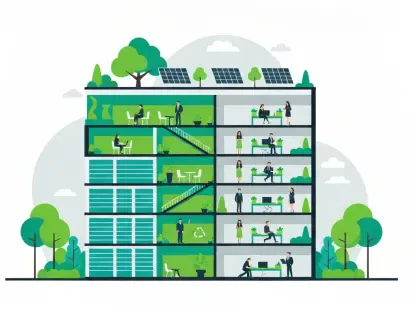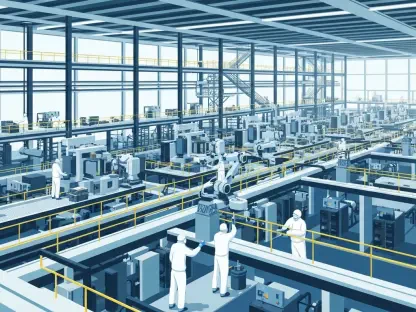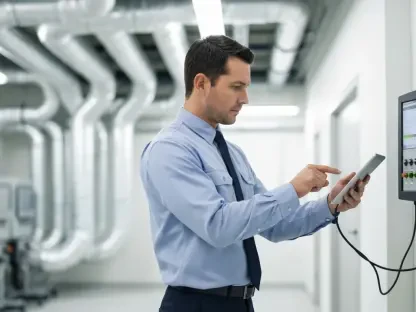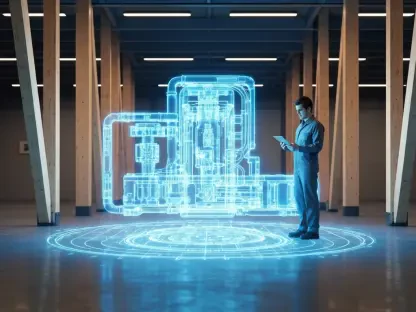The modern workplace is undergoing a profound shift, with a growing recognition that offices should transcend their traditional role as mere functional spaces and become destinations that inspire, engage, and motivate employees every day. By looking to the hospitality industry, particularly the practices of top-tier hotels, a transformative vision for facilities management emerges. This perspective emphasizes infusing office environments with the same meticulous attention to detail, seamless service delivery, and human-centric focus that define exceptional hotel experiences. Such an approach not only elevates employee satisfaction but also enhances productivity and reinforces organizational culture. In an era dominated by hybrid work models, reimagining the office as a compelling place to return to is essential. This concept draws from the best practices of hotels to create workplaces that prioritize comfort, reliability, and connection, ultimately positioning the office as a vital asset in talent attraction and retention.
Redefining Workplace Environments as Experience Hubs
A fundamental lesson from the hospitality sector is the concept of facilities as “experience hubs,” where every element contributes to a cohesive and memorable impression. In luxury hotels, aspects like ambient lighting, pristine cleanliness, optimal air quality, and thoughtful food offerings are carefully orchestrated to ensure guest satisfaction. Applying this mindset to offices means focusing on how these details influence employee well-being and performance. A workspace that feels cared for—through consistent maintenance and thoughtful design—communicates a sense of value to its occupants. This can translate into heightened morale and a stronger emotional connection to the organization. By shifting facilities management from a reactive support role to a proactive driver of experience, companies can create environments that anticipate needs and prevent disruptions, ensuring that employees remain focused and inspired throughout their day.
Beyond the surface-level appeal, viewing facilities as integral to the workplace experience requires a strategic approach to maintenance and design. Hotels excel at creating spaces that feel effortless for guests, and offices can achieve similar results by prioritizing seamless functionality. This means ensuring that heating and cooling systems are unobtrusive yet effective, that communal areas are inviting, and that every touchpoint reflects intentional care. When employees encounter an environment where potential issues are addressed before they become noticeable, trust in the organization grows. This trust fosters a sense of stability, allowing individuals to concentrate on their tasks without the distraction of minor inconveniences. The hospitality-inspired model thus redefines facilities management as a critical component of organizational success, aligning physical spaces with the broader mission of supporting and valuing the workforce in meaningful ways.
Building Consistency for a Reliable Office Experience
Consistency stands as a cornerstone of hospitality that can profoundly reshape workplace dynamics. Just as premier hotels guarantee a dependable experience with every visit, offices must offer reliability to justify employees’ time and effort in commuting, especially in hybrid work settings. This involves ensuring that meeting rooms are equipped with fully operational technology, restrooms are consistently clean and well-stocked, and food options are both accessible and energizing. Facilities management teams can draw from hotel practices by conducting regular inspections to confirm that systems like audiovisual setups and climate controls are ready before they’re needed. Such diligence transforms the office into a space where employees can trust that their needs will be met, reinforcing the value of in-person collaboration and making the workplace a preferred destination over remote alternatives.
Reliability extends beyond physical amenities to the broader operational framework of the office environment. In complex settings like tech campuses or financial centers, maintaining a high standard of service across diverse functions is paramount. Hospitality-driven strategies often involve training staff to anticipate challenges and address them proactively, ensuring a smooth experience for all occupants. For instance, front-of-house teams can be equipped with empathy-based skills to create a welcoming atmosphere akin to a hotel lobby. This level of consistency not only minimizes disruptions but also builds a reputation for dependability that employees and clients come to rely on. By embedding such predictability into daily operations, facilities management becomes a silent yet powerful force in enhancing workplace satisfaction, proving that small, consistent efforts can yield significant improvements in how spaces are perceived and utilized.
Fostering Connection Through Personal Interactions
The hospitality industry thrives on the human touch, an element that can profoundly elevate office environments as well. Personal interactions, no matter how small, create a sense of belonging that is often missing in corporate settings. Simple gestures—such as a staff member offering assistance beyond their typical duties or a warm greeting that acknowledges familiarity—can build trust and strengthen relationships within the workplace. Drawing inspiration from hospitality giants, where every employee is trained to enhance the guest experience, offices can encourage cross-functional roles that empower staff to contribute to a positive atmosphere. These moments of connection leave lasting impressions, transforming routine interactions into opportunities for engagement and fostering a community spirit that enhances loyalty among employees and visitors alike.
Moreover, prioritizing human connection in facilities management means rethinking how staff roles intersect with occupant needs. In hotels, even maintenance teams are often trained to interact with guests in a friendly, helpful manner, a practice that offices can adapt by encouraging all employees to act as ambassadors of the workplace culture. This approach not only improves the day-to-day experience but also reinforces the idea that every individual plays a part in shaping the environment. When employees feel seen and supported through these interactions, their emotional investment in the organization deepens. This sense of belonging can be a differentiator in retaining talent, particularly in competitive industries where personal connection can tip the balance between staying and seeking opportunities elsewhere. The hospitality lens thus offers a blueprint for creating workplaces that resonate on a human level.
Delivering Measurable Value with a Hospitality Approach
Adopting a hospitality mindset in managing office spaces goes beyond creating pleasant environments—it yields tangible operational benefits. Proactive maintenance, a hallmark of top hotels, ensures that potential issues are addressed before they disrupt workflows, saving time and resources. Consistent service quality across departments like cleaning, IT, and catering aligns these functions toward a unified goal of supporting the organization’s mission. Real-time responsiveness to employee needs further minimizes downtime, enhancing overall efficiency. These efforts result in improved space utilization, smoother onboarding processes for new hires, and notably higher retention rates. The return on investment becomes evident as the emotional benefits of a cared-for space translate into measurable outcomes that bolster the bottom line and reinforce the workplace as a strategic asset.
Additionally, the operational advantages of a hospitality-driven approach create a ripple effect across the organization. When facilities management prioritizes seamless integration of services, it fosters collaboration among teams that might otherwise operate in silos. For example, ensuring that food services are timed to support peak work hours or that technical support is readily available during critical meetings demonstrates a commitment to employee success. This alignment not only enhances productivity but also communicates a clear message of organizational priorities, where employee well-being is central. Over time, these practices build a culture of excellence that attracts top talent and sustains long-term growth. By quantifying the impact of such initiatives—through metrics like reduced absenteeism or increased employee feedback—companies can validate the financial and cultural value of infusing hospitality principles into their facilities management strategies.
Embracing Broader Trends in Human-Centric Design
A significant trend shaping modern workplaces is the move toward human-centric design, a principle deeply rooted in the hospitality sector’s focus on guest satisfaction. With hybrid work models redefining expectations, employees now view the office as a destination that must provide added value and comfort compared to remote setups. Facilities management plays a pivotal role in meeting these demands by integrating empathy, meticulous attention to detail, and cohesive service delivery into the workplace. This shift ensures that physical spaces are not just functional but also inviting, encouraging employees to return regularly. The emphasis on creating environments that prioritize well-being reflects a broader understanding that engagement is a critical driver of success in today’s competitive talent market, where organizations must stand out to attract and retain skilled professionals.
This trend also underscores the evolving role of facilities management as a strategic partner in organizational growth. By adopting hospitality-inspired practices, companies can address the nuanced needs of a diverse workforce, from providing flexible spaces for collaboration to ensuring quiet zones for focused work. These tailored environments mirror the personalized experiences hotels offer, adapting to individual preferences while maintaining a high standard of service. The result is a workplace that feels purposeful and supportive, directly impacting employee satisfaction and productivity. As more organizations recognize the link between well-designed spaces and business outcomes, the hospitality model serves as a guiding framework for future innovations in office design. This alignment with human-centric priorities positions facilities management at the forefront of creating workplaces that are as dynamic and adaptable as the people they serve.
Reflecting on the Impact of Hospitality-Driven Workplaces
Looking back, the integration of hospitality principles into office environments marked a significant turning point in how facilities management was perceived and executed. The emphasis on crafting spaces that prioritized employee experience through meticulous detail, unwavering consistency, and genuine human connection reshaped workplaces into hubs of inspiration and productivity. This approach addressed the evolving needs of a hybrid workforce, ensuring that offices became destinations worth returning to. As a next step, organizations were encouraged to assess their current facilities strategies, identifying areas where hospitality-inspired practices could elevate both operational efficiency and emotional resonance. Investing in staff training to enhance interpersonal interactions and adopting proactive maintenance systems stood out as actionable priorities. Moving forward, the focus shifted to measuring the long-term impact of these changes, using employee feedback and performance metrics to refine and sustain this transformative vision.
